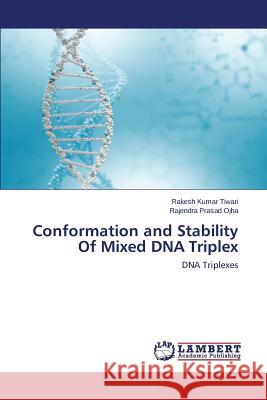Conformation and Stability of Mixed DNA Triplex » książka
Conformation and Stability of Mixed DNA Triplex
ISBN-13: 9783659478123 / Angielski / Miękka / 2014 / 220 str.
DNA triple helices are formed by the binding of a third strand oligomer in the major groove of a Watson -Crick (WC) duplex. Interest in triple-helical nucleic acids-that is, triplex has been stimulated by the recognition of their potential biological roles and genetic applications. Although direct evidence of participation of triplexes in biological processes has not yet been obtained, there are ample data to suggest that triplexes can be involved in regulation of DNA replication, transcription, recombination and development.During DNA triplex formation third oligonucleotide strands binds with purine rich strand in major groove of DNA through Hoogsteen bindings. Third strands may be parallel or antiparallel to first strand. A further extension of this model is given for mixed-base-sequences in which third strand recognizes both the strands of DNA duplex through H-bonding (Mixed DNA triplex). In this manuscript a systematic study on the conformation and stability of mixed DNA triplexes and their possible structure in solution and in vacuum using computational techniques has been described. Which may be important for researchers and new comers.











